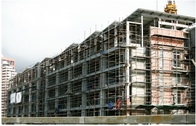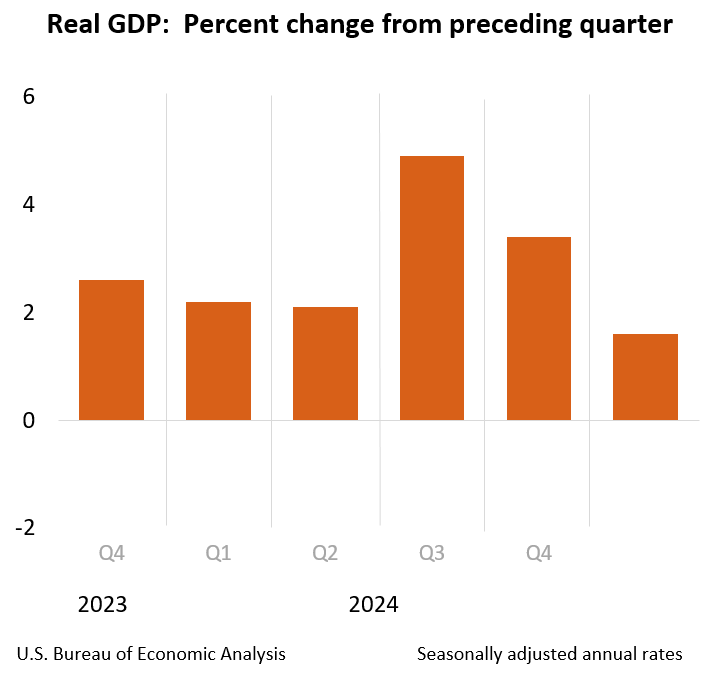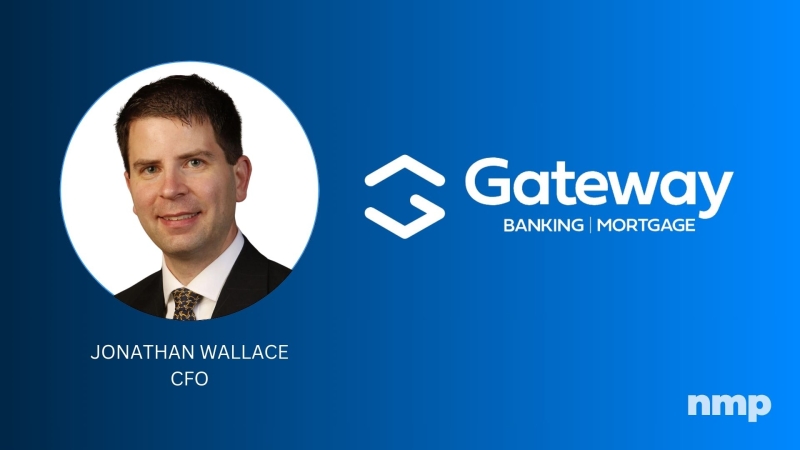Advertisement
Commercial real estate: A protracted recovery

Rising vacancies and falling rents are impacting all sectors of commercial real estate. Landlords are focusing on tenant retention and negotiating lease extensions at low rents with favorable allowances to sustain revenues. The Beige Book Jan. 13, 2010 Summary indicated that while economic activity remains at a low level, conditions have improved modestly further, and those improvements are broader geographically than in the last report. Commercial real estate markets deteriorated in most districts based on information collected on or before Jan. 5, 2009. Commercial real estate transactions and leasing activity are minimal with isolated minor increases in sales. Commercial construction activity is reported to be shrinking rapidly (http://bit.ly/7zmicc).
Bloomberg reporters, Beth Williams and Stuart Bern, note that U.S. commercial real estate prices have fallen more than 40 percent from their peak in October 2007, while the default rate on commercial mortgages more than doubled in the third quarter of 2009 to 3.4 percent from the previous year, according to data compiled by Moody’s Investors Service and Real Estate Econometrics.
Grubb & Ellis indicates that in 2010, commercial real estate fundamentals will decline more slowly than in 2009, with most property types reaching bottom near the end of 2010 and beginning a slow recovery starting in 2011. Robert Bach, senior vice president, chief economist at Grubb & Ellis, reports in the Jan. 19, 2010 Weekly Market Insight that vacancy rates in Q4 2009 increased by 30 basis points for office and 20 basis points for industrial compared with third quarter gains of 50 and 30 basis points, respectively. This raises the possibility that the office and industrial leasing markets may bottom out as early as mid-year with modest, positive absorption possible in the second half of 2010.
As featured in the Jan. 19, 2010 National Real Estate Investor podcast titled, “Commercial Real Estate: Hey, Save a Piece of Stimulus Pie for Me!”, John B. Levy, founder of John B. Levy and Company, the real estate investment banking firm, does not anticipate resurgence in commercial real estate values until 2011. Levy offers a clearly improved outlook for 2010 compared to last year, anticipating a protracted recovery of values and pricing with gradual increases depending on how the economy grows as well as the rebirth of commercial mortgage-backed securities (CMBS). According to Levy, the first and second quarters of 2010 will be slow improving in the second half of the year, but favorable overall compared to 2009’s totals.
In a Jan. 13, 2010 Bloomberg interview, Kenneth Laub, a broker for five decades, and consultant and founder of Kenneth Laub & Company, is said to have handled more than $40 billion of real estate transactions since its inception in 1969, says, “It’s not a supply/demand thing; it’s an overleveraged condition." Unlike previous cycles driven by supply and demand where inventories have been overbuilt making it a landlords’ market or diminished rents make it a tenants’ markets, the current market is driven by a need to deleverage. Ultimately, Laub said that a coming recovery will extend beyond typical periods of two to three years. “It won’t be a typical part of a cycle where we’re down for two or three years and things recover. It will be longer than we’ve gone through before.”
Wall Street Journal Real Estate Reporter Christina S.N. Lewis explains that, despite property prices bottoming, a large number of commercial assets remain underwater, with loans worth more than the property's value. That distressed debt totals hundreds of billions of dollars on bank balance sheets and in commercial-mortgage-backed securities held by institutional investors.
Any stabilization applies to only the top quartile of properties—fully leased buildings with steady rental income located in established markets. "[In general] I wouldn't say there's been any improvement in pricing for a property that isn't top-tier," said Robert M. White Jr., president and founder of Real Capital.
Michael Stuart elaborates in the January issue of Commercial Investment Real Estate that loan demand continues to decline or remain weak and credit quality continues to deteriorate. Amassing capital in a credit-restricted market tops real estate priorities. Stuart recommends pursuing non-traditional capital-raising options. For instance, Simon recently sold $500 million of five-year unsecured bonds priced to yield 5.46 percent, bringing the total capital Simon has raised in bond and equity offerings since March 2009 to $3.4 billion. Its cash available for strategic acquisitions, including capacity on its revolving line of credit, is now in excess of $6 billion.
Moody’s Investors Service said that commercial property prices rose one percent in November, after 13 consecutive months of declines, according to their latest Moody’s/REAL Commercial Property Price Index (CPPI).
Here are some excerpts from the Moody’s/REAL report:
►After 13 consecutive months of declining property values, the Moody’s/REAL Commercial Property Price Index (CPPI) measured a one percent increase in prices in November. Prices began falling over two years ago and significant declines were seen throughout 2009, with several months experiencing five percent-plus value drops. The one percent growth in prices seen in November is a small bright spot for the commercial real estate sector, which has seen values fall in excess of 43 percent from the peak.
►Transaction volume fell in November. Overall, 362 total sales were recorded, with an aggregate value of $4.1 billion.
►We expect commercial real estate prices to decline further in the months ahead. Prices for properties with short-term lease structures, such as multi-family, could show signs of a sustainable recovery later this year, while other property types will likely need longer to turn the corner.
“We are beginning to see some early, yet encouraging, recovery signals, as the manufacturing sector is improving,” said Craig Meyer, managing director and head of Jones Lang LaSalle’s North American Industrial Services team. National Real Estate Investor reports that rental rate appreciation is not expected to begin until consumer spending and production activity trends reverse.
“There will be giant opportunities that come out of this,” said Laub. Opportunity lies in overleveraged and underfinanced distressed assets. Record-level inventory is available in all sectors. Bargain hunting hedge funds, foreign investors and solvent real estate companies will acquire properties with diminished values. In a Jan. 19, 2010 Bloomberg interview, Laub said that prices and values will begin to stabilize once unemployment stabilizes. At approximately 200-square feet per unemployed worker, demand for space will increase once companies begin hiring.
New services are emerging as property owners seek to restructure their finances, acquire tenants or liquidate assets. In a Jan. 15, 2010 squarefeetblog post, Stan Mullin, the former head of SIOR, wrote a detailed article covering receiverships that explains how commercial agents will benefit from working with court-approved receivers to preserve the value of an asset after a default. There is a major upsurge in receiverships as a result of the crisis, and most of the major commercial real estate (CRE) firms have either revived or setup service lines to service the loan industry.
“We’re going to have a lot of new services that are going to evolve, things we haven’t seen or done before,” Laub said.
Deleveraging is just getting underway. Deleveraging takes two to three years at which time gross domestic product (GDP) growth is suppressed. The market is only at the beginning stage or renegotiating between mortgage holders and developers.
“The rebirth of the CMBS market is absolutely going to happen this year,” said Levy. “Last year, we had three CMBS deals, and that was three more than anyone predicted. The CMBS market in 2010 won’t resemble the one we knew and loved in 2007, but we will see a rebirth with reasonable and rational underwriting. I even think we’ll see the first multi-borrower CMBS deal this year.”
Michael Lagazo has more than six years of commercial real estate experience. Lagazo specializes in retail real estate and oversaw operations, leasing and marketing as a center manager and general manager for leading global REITs and real estate firms. Lagazo has most recently served as a general manager for Aviara, one of Southern California's premier real estate developments covering a two million-square foot master-planned community with 1,384 executive homes, as well as a Four Seasons Resort and golf course. Lagazo has served as a center manager for Forest City Enterprises at award-winning super regional center, Victoria Gardens in Rancho Cucamonga, Calif., at Madison Marquette and at Westfield Group.
About the author





